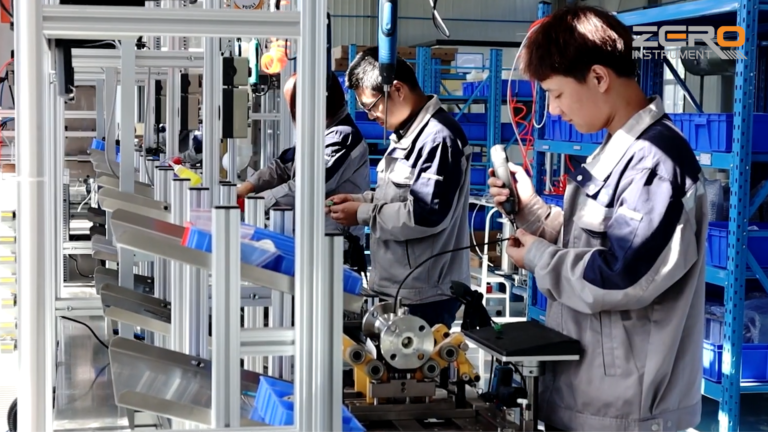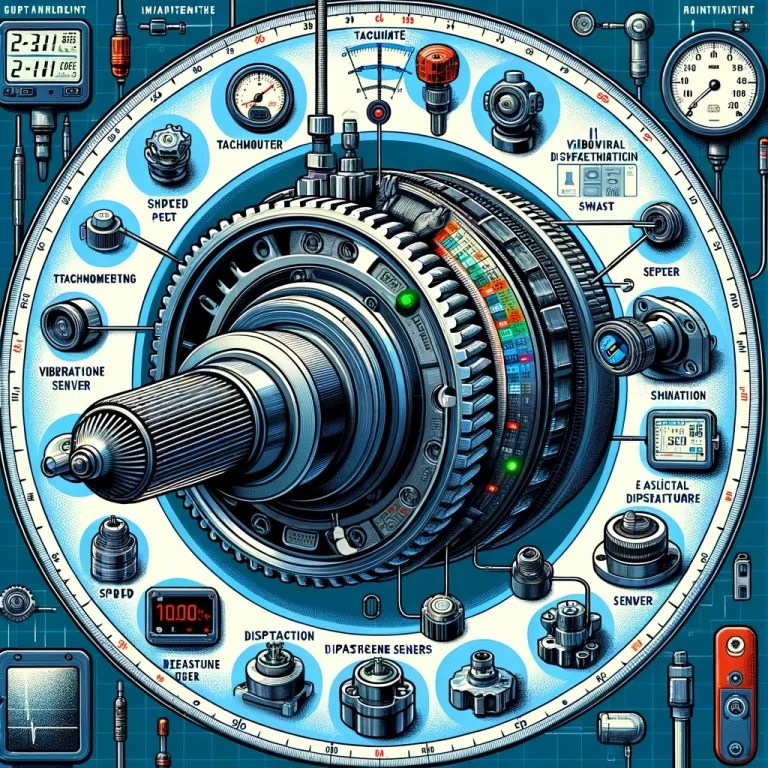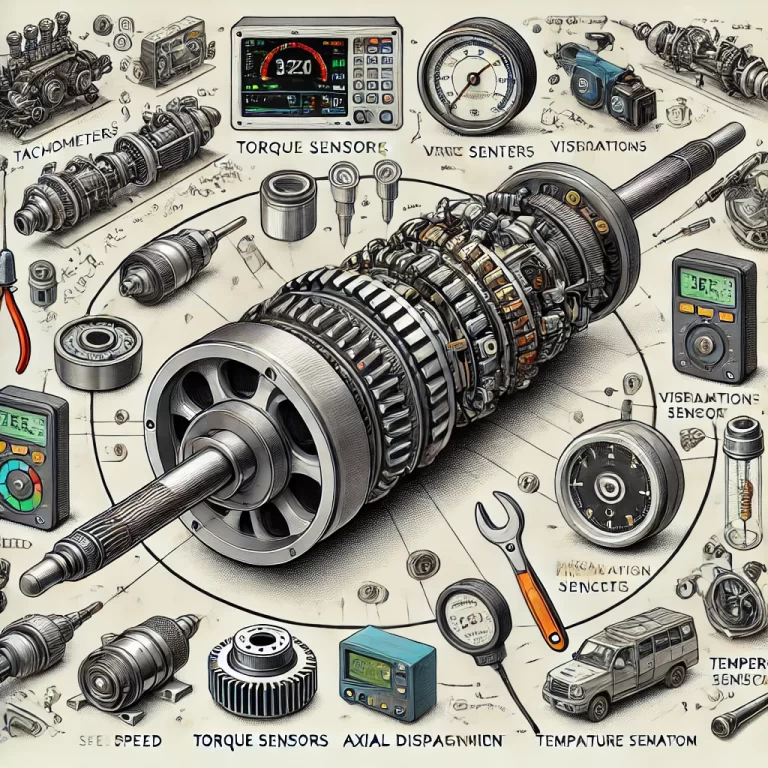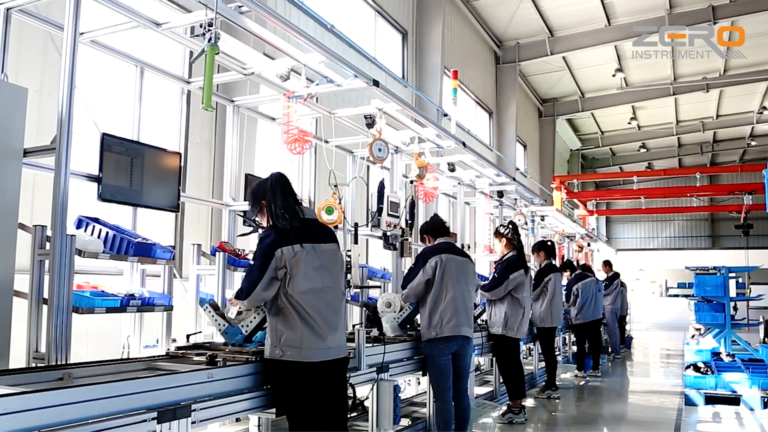Shaft system instruments are essential for monitoring and controlling the performance and condition of rotating shafts in mechanical equipment. These instruments are widely used in fields such as marine engineering, industrial machinery, and power plants. By monitoring parameters like speed, torque, vibration, and temperature, shaft system instruments help ensure the safety and reliability of equipment operation. In this article, we’ll cover the basics of shaft system instruments and their maintenance.

I. Basic Types of Shaft System Instruments
Tachometers
Tachometers are used to measure the rotational speed of equipment such as engines, turbines, or generators. Accurate speed measurement is critical for maintaining safe operational limits and preventing over-speeding, which can cause mechanical failure.Torque Sensors
These sensors measure the torque (rotational force) being applied to the shaft. Torque measurement helps assess the mechanical load and determine whether the equipment is working efficiently or under strain.Vibration Sensors
Vibration sensors monitor the oscillatory motion of rotating shafts. Excessive vibration often indicates issues like misalignment, unbalanced loads, or bearing wear. Early detection of these problems prevents catastrophic equipment failure.Axial Displacement Sensors
These sensors measure the axial (longitudinal) movement of the shaft. Excessive axial displacement can result in mechanical misalignment, leading to damage to other system components such as bearings or seals.Temperature Sensors
Shaft system temperature sensors are used to monitor the heat levels in rotating equipment. Overheating can be a sign of excessive friction, inadequate lubrication, or mechanical wear, which could result in costly repairs or downtime.

II. Functions of Shaft System Instruments
Ensuring Safe Operation
Shaft system instruments provide real-time monitoring of critical parameters, helping operators detect abnormal conditions early and take preventive measures to avoid accidents or breakdowns.Optimizing Equipment Performance
By continuously monitoring performance data, these instruments help fine-tune operational parameters, which leads to improved efficiency and extended service life of the machinery.Fault Detection and Early Warning
Shaft system instruments play a vital role in predictive maintenance. Early detection of anomalies such as excessive vibration, high temperatures, or abnormal torque levels enables timely intervention before severe damage occurs.
III. Key Points of Shaft System Instrument Maintenance
Regular Calibration
To maintain measurement accuracy, shaft system instruments must be calibrated at regular intervals. Calibration ensures that the instruments deliver reliable data over long periods, especially after extensive use or exposure to harsh conditions.Keep Instruments Clean
Dust, dirt, and debris can accumulate on the surface of instruments and disrupt the accuracy of sensors. Regular cleaning ensures that readings remain accurate and the instruments function correctly.Check Sensor Condition
The sensors in the shaft system should be inspected periodically to ensure they are functioning correctly. Any faulty sensors should be replaced promptly to avoid inaccurate readings and potential operational risks.Cable and Connector Inspection
The cables and connectors that link the sensors to the monitoring system need to be inspected for signs of wear, corrosion, or loose connections. Poor signal transmission can compromise data quality and lead to faulty operations.Prevent Overloading
Equipment should operate within the specified limits of the shaft system instruments. Overloading the system can cause damage to both the instruments and the mechanical components, potentially leading to costly repairs.Data Recording and Analysis
Regularly recording the data from shaft system instruments and analyzing the trends can provide insights into the health of the equipment. Early signs of wear or stress can be identified through data analysis, enabling preventive maintenance and reducing unexpected downtime.

IV. Common Shaft System Instrument Failures and Troubleshooting
Inaccurate Measurements
Causes: Calibration drift, sensor failure, or signal interference. Solution: Recalibrate the instrument, replace faulty sensors, and check for any potential interference from surrounding equipment.No Response from Instrument
Causes: Power failure, cable disconnection, or sensor malfunction. Solution: Ensure that power is being supplied, check the connections, and test or replace sensors if necessary.Erratic Readings
Causes: Vibration, loose connectors, or external electromagnetic interference. Solution: Secure the instrument properly, tighten any loose connections, and minimize the impact of surrounding interference.
By following the best practices for maintenance and troubleshooting, operators can extend the lifespan of shaft system instruments and ensure the optimal performance of their equipment. Regular inspections and data-driven monitoring are essential for maximizing equipment uptime and preventing costly failures.

Conclusion
Shaft system instruments are critical for the safe and efficient operation of mechanical equipment that relies on rotating shafts. From measuring speed and torque to monitoring vibration and temperature, these instruments provide the necessary data to keep machinery running smoothly. Proper maintenance, including regular calibration, cleaning, sensor inspection, and data analysis, ensures that shaft system instruments remain accurate and reliable. By proactively maintaining these instruments, operators can improve equipment performance, minimize downtime, and avoid costly repairs.
